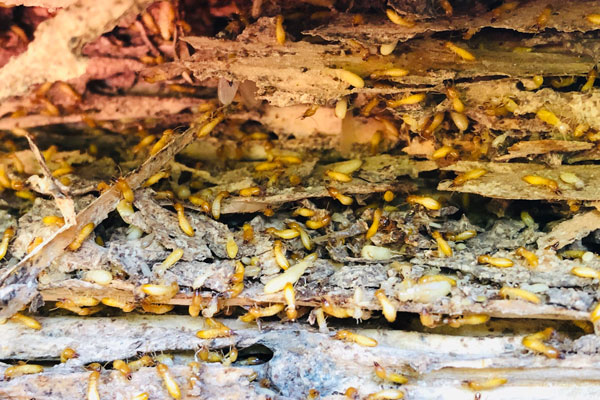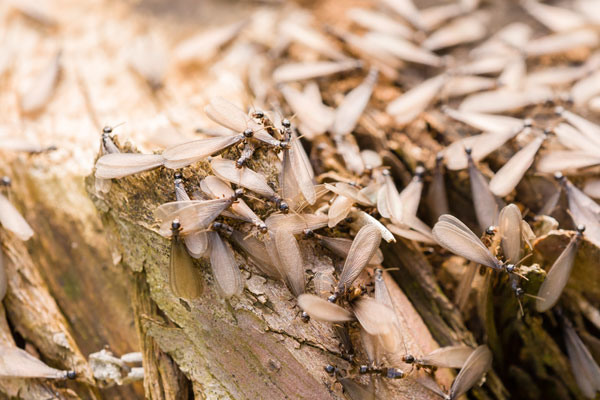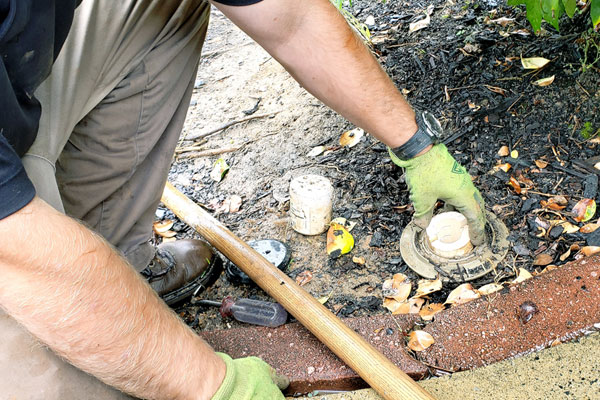How does one conduct termite control in his home? The best way is to engage termite control services that are effective in controlling termites in your house. It’s critical to act fast if you suspect your home is infested with termites. Hollow-sounding timber and mud tubes are telltale evidence that they’ve taken control. Termites may inflict a lot of damage before you ever notice they’re there, so it pays to be cautious.
What Are The Different Types of Termites?
Subterranean termites and drywood termites are the two main varieties of termites you’ll encounter. It’s crucial to figure out whatever type you’re dealing with because different treatments are required for each. While you can use poisonous barriers to keep subterranean termites out, drywood termites will require spot treatment or fumigation.
- Subterranean termites: They can be found in your home’s foundational wood, soil, and any compost piles. To travel in your home, they build mud tubes, or roads, out of wood and earth. Because of their saw-toothed teeth, this termite variety causes greater damage than drywood termites. Subterranean termites have the ability to fully destroy a structure if given enough time. Subterranean termites are between ⅛-⅜ inches long and have a thin form. The colour of their skin is determined by their “caste.” Workers have a soft cream tint to their bodies, whereas soldiers have brown heads. Termites that reproduce come in two types and colours. The primary reproductives are black or brown in colour, whereas the supplementary reproductives are creamy white in colour. Subterranean termite colonies can grow to be massive, with populations ranging from 100,000 to one million termites.
- Drywood termites: Termites that live only in wood are known as drywood termites. They don’t travel by mud tubes, and they’re usually exclusively found near warm coastal areas. Drywood termites come in a variety of sizes and colours, ranging from ⅛-½ inches in length. White termites, like subterranean termites, cause direct damage to wood. The colour spectrum of winged drywood termites ranges from yellow-tan to light brown. Colonies of drywood termites can have up to 2,500 members.

How to Identify a Termite Infestation?
To do termites control, Examine your attic, all of your home’s cracks and joints, as well as your fuse boxes. If your home is under attack, you would observe these:
| Phenomenon | Description |
| Hollow wood | If you tap or knock on your wood and hear a soft thud or hollow sound, you’ve got termites. A screwdriver can be used to further test your wood. It’s not a good sign if you press the screwdriver into the wood and it gives easily. |
| Mud tubes | To connect the wood they devour to the soil, subterranean termites build their own “highways” constructed of mud tubes. These mud tubes are roughly the width of a pencil and are made of wood and soil. You have termites if you see them, but it doesn’t mean you’re free of them if you don’t see them. |
| Head banging | A peculiar clicking sound may be heard emanating from within your walls. This is because when soldier termites perceive a threat, they knock their heads against the wood and shake their bodies to warn other termites. |
| Swarm evidence | Subterranean termites drop their wings in piles when they leave to start a new colony. Termites could be the source of a swarm of scattered wings. |
| Peeling paint | When termites eat through drywall, moisture seeps into the gap between the surface and the paint, causing the paint to bubble or peel. There are a variety of causes for your paint to buckle, but if this occurs in conjunction with other indicators, you may have a termite infestation. |
| Frass | Frass, or termite droppings, are microscopic granular oval pellets that can be seen on door frames, baseboards, and windowsills. |
| Seeing live termites | There’s a chance you’ll come across some live termites. It’s crucial to tell them apart from flying ants so you know what you’re up against. The back wings of termites are the same size, their abdomens are thick, and their antennae are straight. Flying ants, on the other hand, have a variety of wing sizes, are thinner in the middle, and have bent antennae. |

Getting Rid of Subterranean Termites
Termiticide Barriers: You might be able to buy professional-level termite-killing chemicals like liquid Taurus SC and Termidor SC. To build a barrier, you apply these traditional termite treatments to your home’s exterior perimeter. Because termites can’t detect the termiticide, they don’t try to avoid it. A termite will die if it consumes termiticide-treated materials. Termiticide also operates in the same way as a virus. When one termite comes into contact with the termiticide, it unwittingly spreads it across the colony, infecting other termites and eventually destroying it.
Direct Chemicals: In contrast to termiticides, direct chemicals can be utilised within your home. This is the method to use if you see a termite and want to get rid of it right away. Termidor Foam should be sprayed directly into gaps, voids, and crevices that termites use to hide. The odourless foam will expand before dissipating, leaving a residue that poisons termites as soon as they come into contact with it. This can last for a month or even longer.
Termite Baits: Termite baits placed around the foundation of your home lure foraging termites to the poison inside. The slow-acting toxin stops termites from growing normally, killing them when they attempt to moult. Because the toxin takes a long time to take effect, infected termites will transport the insecticide back to the colony and spread it to other termites.
Beneficial Nematodes: Many garden pests, including termites, are natural parasites of these minuscule, segmented roundworms. Beneficial nematodes penetrate into their hosts and produce a symbiotic gut bacteria that poisons the termite’s blood, killing it in days. Beneficial nematodes can be purchased online or in retailers. Infested sections of your lawn and garden should be treated with a mixture of nematodes, potting soil, and cold water.
Getting Rid of Drywood Termites
Spot Treatment: Drywood termites can be controlled by drilling and filling holes. To begin, drill holes every 10 inches or so into the termite-infested wood. Once you reach the nest, you will encounter resistance. Then use termiticide to fill the holes. To finish, fill the holes with putty or a wood patch.
Essential Oils: Orange and neem oils can kill termites over time by preventing them from shedding their skin or laying eggs. Simply combine two cups of water, a few drops of dish soap, and roughly ten drops of your preferred oil in a spray bottle. Spray it on contaminated wood and materials after shaking it up.
Getting Rid of Subterranean and Drywood Termites
Boric Acid: Boric acid is a tried-and-true termite-killing solution. The very efficient boric acid is used as the principal ingredient in many termites control pesticides available in stores. Boric acid dehydrates the termite and causes its nervous system to shut down. Simply apply the acid evenly to cracks and fissures in floors, walls, and ceilings.
Diatomaceous earth: Termites are killed by entering their exoskeleton and dehydrating them with this procedure. Diatomaceous earth is composed of silica-based exoskeletons from ancient aquatic creatures. Simply sprinkle the powder over locations where termites are suspected and watch them crawl over it.
Cardboard trap: Wet two pieces of cardboard and stack them on top of each other to construct a form of DIY bait once you’ve located the source of your termite infestation. Termites will be attracted to the cellulose in the cardboard, and they will become trapped between the two pieces. The cardboard can then be taken outside and burnt. This isn’t a particularly effective strategy because there’s no guarantee that it’ll catch all of the termites, who can reproduce swiftly. Also, regular upkeep is essential—if too many dead termite carcasses accumulate, other termites will be discouraged from crawling to the cardboard.

The simplest method would be to engage a Singapore termite control company. A termite control company provides termite control services that would alleviate all concerns and prevent the growth of such termites. Termite control cannot be delayed so get help now if you think that your home is infested with termites.
 Tasselline | Latest Articles By Singaporeans, for Singaporeans Article Site for Singaporeans
Tasselline | Latest Articles By Singaporeans, for Singaporeans Article Site for Singaporeans